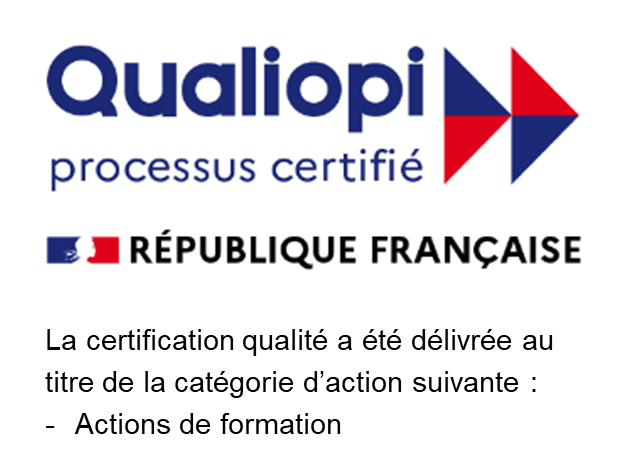ARE COST SAVINGS GETTING IN THE WAY OF YOUR DIVERSITY AND INCLUSION AGENDA?
Cecilia Franchi • July 18, 2019

A series of alternative approaches to International Mobility have emerged over the last few years. We have seen an increase in commuters, extended business travelers, and short-term assignments. Frequently, these “split family assignments” try to contribute to the deployment of talent around the globe while saving costs. We all agree that gender diversity is a must within organizations, with international assignments being an essential path to upper management positions. But are these cost saving initiatives helping or preventing gender diversity within our organizations? A series of studies support what our experience on the ground is telling us: female talent is more sensitive and reluctant than their male counterparts to accept split family assignments. Leaving their partner/spouse and children behind for a few months of commuting is not working well for female talent, whatever the age group. So, if your cost cutting initiatives are indirectly affecting your diversity and inclusion agenda, what does it mean for you as an international employer? Unaccompanied assignments for families have been on the rise for several years, either driven by the employee for practical reasons, or to cut costs for employers. Consequently, when cost-cutting is the main objective and these assignments progress long-term, it often becomes unsustainable for the family and may negatively impact employee retention
AIRINC’S 2019 Mobility Outlook Survey* reports that cost savings are now a permanent priority for most GM departments, whereas until now cost considerations have been somewhat cyclical or sector specific. This has led to the creation of many types of ‘light’ packages, with stripped down perks. On a global perspective, the partner of a female expat is more likely to prioritize their career than the partner of a male expat. This is in no way prejudiced but simply based on statistics, namely the number of non-working women which still outweighs men. With respect to traditional accompanied long term assignments, you could therefore deduce that female expats are more likely to expect or need spousal career assistance and other family-related assignment services whilst on assignment. In this sense, today’s lower cost packages, with trimmed down benefits, may be more discouraging to female talent than their male counterparts and this is working against the diversity goals of most organizations.
Jonathan Dunlea, Partner at PwC and Abbie Cooke, Global Mobility Consulting Senior Manager at PwC add: “With cost pressures persuading even more employers to look at different ways to approach mobility, many of these new approaches to mobility (extended business travel, commuter assignments, short term assignments etc.) can place additional pressure on the family unit, and disrupt “traditional” gender role expectations. It is important for employers to understand the ‘mobile readiness’ of their female employees, and that this changes over time due to stage of career, family and other personal commitments. Through alignment between talent management and global mobility, the right international opportunities can be identified at the right time for more female employees. Costs can still be managed in any scenario through building flexibility and choice into the mobility framework and policy options, therefore the resulting support and benefits package is more tailored to the individual’s needs and circumstances, without creating exceptions and additional entitlements. We believe that employers who are willing to take a flexible approach to their mobility policies and benefit entitlements will have a competitive advantage through mobilizing more of their female talent. Where employees are able to select assignment benefits which are most relevant to them (perhaps additional childcare support, or additional home leave flights, specific spousal support) and trade down benefits which might be less relevant, it will hand some degree of control back to the female expatriate, and maximize the chances of them taking the opportunity offered.”
Share this post

Tracy brings her passion for people, coaching, and consultative sales to NetExpat. With a background in business psychology and years of experience guiding individuals and teams, she thrives on building client relationships and supporting growth. Tracy values NetExpat’s culture of equality, collaboration, and respect, where every voice matters. Motivated by making a genuine impact, she envisions global mobility becoming increasingly diverse, strategic, and human‑centered in the years ahead.

At NetExpat, we believe that global mobility is more than logistics, it’s about people, families, and the human experience of moving across borders. That’s why we launched the Global Care Awards to honor the organizations who go above and beyond to support mobile talent with care, inclusion, and strategic vision.

What if your AI tools are unintentionally costing you great hires, damaging team morale, or shrinking your global reach? Cultural bias in AI happens when technology reflects the norms and assumptions of the culture it was built in. That means even the smartest algorithms can struggle to interpret behaviors or communication styles that differ from the data they were designed and trained on. The result? Missed opportunities, disengaged teams, and tech that undermines—rather than supports—your global strategy. In today’s interconnected workplaces, understanding and addressing cultural biases is ethical, but it’s also about business resilience and growth. This blog post offers a clear, practical overview of where these biases show up and how you can build AI systems that truly support diverse teams and markets, along with business sustainability and growth.

Today’s global hiring landscape is complex. A candidate’s ability to succeed isn’t just about their qualifications; it’s about whether they can thrive in a new geographic, cultural, and/or corporate environment. Too often, companies assume preparing for success starts at the onboarding phase, but, in reality, the most crucial hiring decisions happen much earlier—during the pre-decision phase. Why does this matter? Because hiring the right talent isn’t just about filling a role; it’s about ensuring long-term success. Without assessing readiness factors early, companies risk costly misplacements, cultural mismatches, and logistical hurdles that could have been avoided. This is where internal mobility and talent acquisition teams can align and collaborate to transform hiring into a truly strategic process – one that ensures the right talent is selected, supported, and set up for success.

When organizations outsource business functions to another country—whether it’s accounting, customer service, or tech support—they’re often hoping for a streamlined, cost-effective solution. But when intercultural differences aren’t factored into the strategy, the shift often results in the exact opposite: misaligned expectations, breakdowns in communication, and friction across internal teams. Time is lost, along with trust, satisfaction ratings, and even clients. Too often, stakeholders don’t even know why. When internal teams find themselves working across cultures, misunderstandings are common. The definition of “good service” in one country may feel intrusive or inadequate in another. Perceptions of hierarchy and respect vary widely, leading to unintentional offenses. And communication styles are so nuanced that even simple messages can be misread—causing delays, confusion, and strained relationships. Internally, employee engagement and productivity suffer. Clients may notice the shift too—especially in customer-facing functions. Intercultural agility is the solution.

Leadership wants metrics, but they also need clarity. When you see a business need or opportunity, building the right business case with data is the way to give that to them. It’s also the best way for you to get buy-in. This blog post will discuss how to use data to strengthen business cases and the role of business storytelling in securing buy-in.

International relocations are a big adjustment for employees, but they can be an even bigger adjustment for their accompanying spouses or partners. This is especially true if they were a part of a dual income household in their country of origin. While organizations often focus on logistical support for the employee, the success of an international assignment hinges equally on the well-being of the entire family. If a relocating partner struggles to integrate, it can have negative impacts on the partner’s state of mind, the couple’s relationship, the employee’s ability to focus on their new role, and both assignment and organizational objectives.







